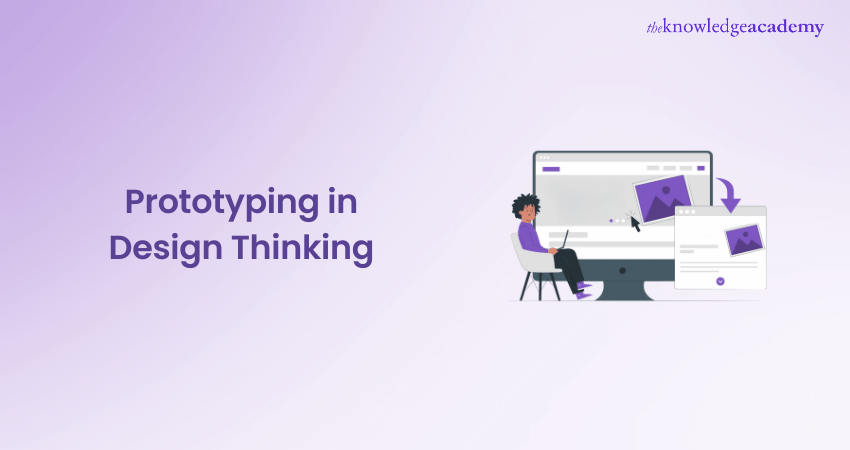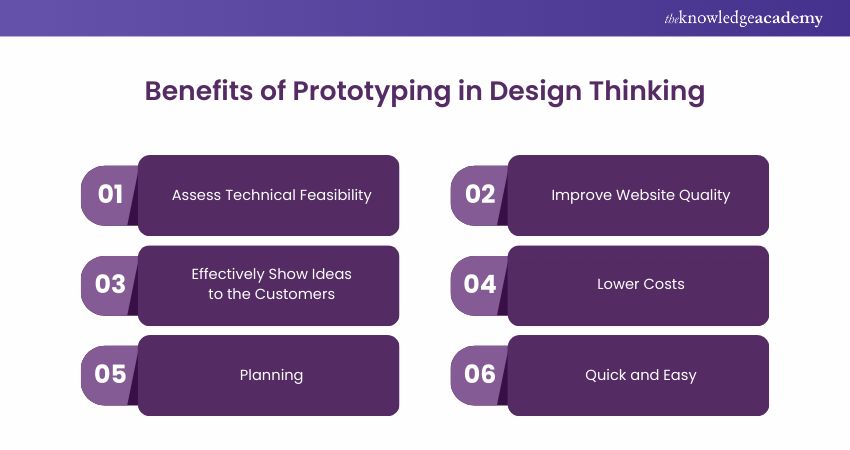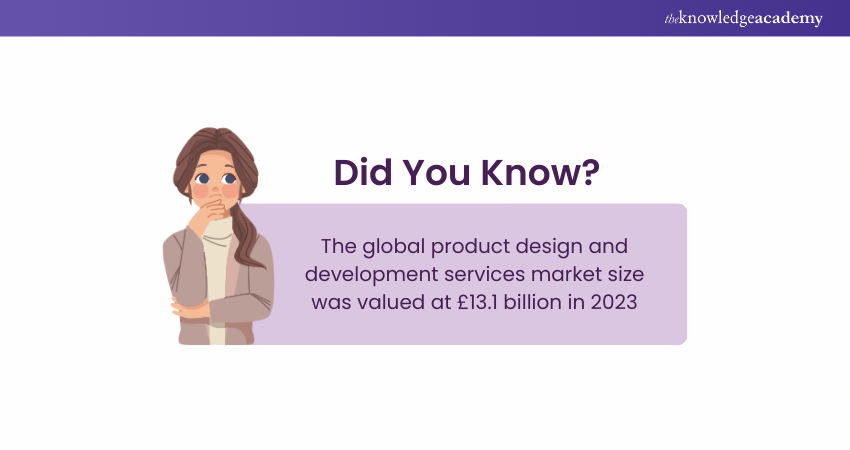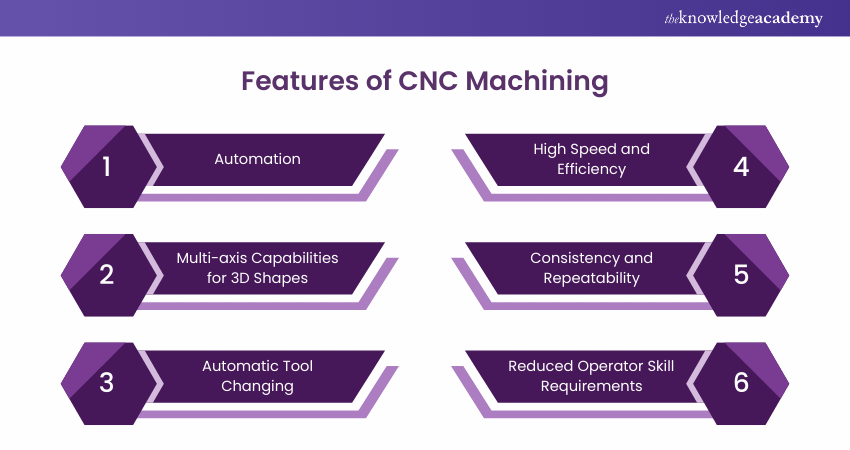We may not have the course you’re looking for. If you enquire or give us a call on +33 805638382 and speak to our training experts, we may still be able to help with your training requirements.
Training Outcomes Within Your Budget!
We ensure quality, budget-alignment, and timely delivery by our expert instructors.

Imagine bringing your dream product to life with the power of Prototyping in Design Thinking. This captivating technique transforms abstract ideas into tangible models you can touch and evaluate. More than just a creation process, prototyping fosters experimentation and iteration, making it a dynamic tool for innovation.
Dive into this blog to explore the exciting role of Prototyping in Design Thinking and discover the substantial benefits that can elevate your creative projects. Don’t wait—read on and let your visionary ideas take flight!
Table of Contents
1) What is a Prototype?
2) Understanding Prototypes in Design Thinking
3) Benefits of Prototyping in Design Thinking
4) Types of Prototypes
5) Five Stages of Prototyping in Design Thinking
6) Conclusion
What is a Prototype?
Prototypes are early models, samples, or releases of products built to test a process or concept. Semantics can be used in many contexts, including electronics, design, and software programming. Generally, System Analysts use prototypes to improve the precision of a new design.
Prototyping is an essential step of the Design Thinking process and is often used in the final testing phase. To evaluate whether a product truly solves its users' problems, designers create a mock-up of the product, called a prototype, and test it with prospective stakeholders and users. It enables designers to test the current design's practicability and investigate how trial users feel about the product.
Understanding Prototype in Design Thinking
In the design thinking procedure, the aim of a prototype is to test or assess a product or product idea before it is launched. Prototypes are copies or samples of final products used as testing tools. It is planned to test products and product ideas before infusing much time and resources into building a marketable product.
Developing prototypes lets the Designers create simple, minor prototypes of the products and utilise them to monitor, record, and evaluate user performance levels or their general behaviour and responses to the current design. Designers can then make suitable improvements or possible modifications with the right approach.
There are many forms of prototypes, from simple sketches to rough paper prototypes, that ratify service offerings. To create prototypes, Designers do not need the complete product. In fact, they can take part of the product and create a prototype to test only that particular part of the product.
Get yourself registered in our Design Thinking Training and get familiar with the Design Thinking process!
Benefits of Prototyping in Design Thinking
It's time to understand how you can enjoy the various benefits of Prototyping in Design Thinking. Here are some of the key benefits:

1) Assess Technical Feasibility: When you create a prototype, it makes the idea of the concretisation process possible and smooth. Additionally, it also evaluates which feature is leading to difficulty in implementation. Hence, Prototyping in Design Thinking can assist in identifying unpredictable technical, physical, and financial restrictions.
2) Improve Website Quality: A prototype allows to improve the website quality. A well-designed and well-thought-out website assists in conducting the Design Thinking Process. It means Designers can conduct testing for site usability, inspect site navigation, determine correct placement and access information on the site.
3) Effectively Show Ideas to the Customers: Efficiently thinking about the design of the prototype makes it feasible to show your future product or product idea to potential consumers before its actual launch in the market. It also enables you to come up with better marketing strategies and begin the pre-sales.
4) Lower Costs: A great idea can create various prototypes before the launch of the actual product, and it can ultimately lead to cutting down the additional costs of unsold products.
5) Planning: Through Prototyping, the design team gets important information that helps them plan the undertaking. A prototype assists in building user stories and emphasising user needs. This fetches significant benefits to the scrum teams.
6) Quick and Easy: Prototyping is a very quick and smooth procedure. A Designer can design a ready-to-use prototype in no time ever with the help of simple ideas on paper if they understand the functionality and logic of the product.
Master the skills associated with SAP S/4HANA Cloud in our comprehensive SAP Intelligent Product Design Training – Sign up now!
Types of Prototypes
The following are some common types of prototypes:
1) Sketches and Diagrams: Sketches and diagrams are the most basic type of prototypes. It requires very little effort, and Designers do not need to have artistic drawing skills to achieve this purpose. Designers can use sketches to start the process of analysing and creating a new product and also share the concept with their colleagues to have more ideas and discussions.
2) Paper Interface: Digital products such as mobile apps, websites, web services, and more need a variety of Prototyping methods for the end design and development. The paper interface is a proven, easy and early-stage prototype for digital products. Designers can sketch paper interfaces or sketch and cut out the useful parts of User Interfaces (UI), like a text field or drop-down menu.

3) Storyboards: Storyboarding is an incredible method of telling stories and directing targeted customers via a User Experience (UX). Storyboards let the Designers visualise how users would experience an issue or product and present it in a sequence of sketches or images. Stories help collect information about users, assignments, and objectives while simultaneously stimulating new ideas via collaboration with other designers.
4) Role-playing: Role-playing prototype allows Designers to examine situations within the system they are targeting physically. Role-playing can capture and enact the user's experience (UX) with the help of a product or service. Consider imitating their expertise to achieve an empathic understanding of users. Designers can create props using objects and audio replications to emulate the user environment.
5) Physical Models: A physical model conveys an intangible idea in a physical, three-dimensional form. This allows much better user testing and can stimulate discussions on the form factor of the suggested product.
6) User-driven Prototypes: In these types of prototypes, Designers don't test User Experience; instead, they let the user create some designs to understand their thinking process more. This user-driven prototype adds value to the advantages of Design Thinking. Its main motive is not to utilise the user-generated ideas but to utilise their designs to match the final product with the user’s ideas.
Five stages of Prototyping in Design Thinking

The following are the five stages of Prototyping utilised in the Design Thinking process. Let’s understand each stage:
Define the Vision
In this stage of Prototyping, the designer is required to put forward an extensive vision for the product. This stage involves asking a few key questions that must be answered, such as what the target market is, how many other options are available, what problem it resolves, and how much labour and material is required.
Answering these key questions gives the designer clarification on whether the prototypes are even needed.
Focus on Key Features
One of the most common mistakes designers make is that they try to create a prototype similar to the end product. Designers can use this idea when illustrating its value to the investors, but it is necessary in other requirements. The designer should pick out one or two key product features to concentrate on in their prototype.
Produce
The actual creation of the prototype is the longest part, as the creator has to assess all the options involved. Some standard Prototyping methods to consider include the following:
1) 3D Printing: This is a wonderful option when the designer has a clear vision and wants to quickly test its effectiveness and operation.
2) Computer Numerical Control (CNC) Machining: It’s a procedure that eradicates potential human mistakes. The product is automated and machine-controlled.

3) Powder Bed Fusions: This is a method particularly created for aluminium or metal materials with high melting points.
4) Mould Making and Casting: This process enhances flexibility and is suitable for creating custom designs and parts without the requirement for computer input.
Test and Refine
After creating the initial prototype, the designer now has to evaluate it, consider new options, and look for methods to improve the complete procedure. This procedure may include throwing out the initial design and restarting from step one. At any point, testing and refining should arise numerous times to make sure the prototype is ready to be revealed to stakeholders.
Present
This is called the presentation stage, and it varies according to the objective of the prototype. It may involve designing various models for testing among consumers, shipping the design in for patenting, or showing it to investors.
Register for our Design Thinking For R&D Engineers Training and learn how Design Thinking is used as a management tool for R&D projects.
Conclusion
In conclusion, Prototyping in Design Thinking is a key step in driving ideas from paper to tangible reality. Through the creation of prototypes, you can evaluate your concepts, gather feedback, and make improvements along the way. This hands-on approach helps refine your ideas while encouraging creativity, innovation, and teamwork. Gaining insight into this process, as outlined in this blog, will help you craft practical solutions that align with users' needs.
Check out our Creative and Analytical Thinking Training now and gain an in-depth understanding of Analytical thinking in the Design Thinking process!
Frequently Asked Questions

How Does Prototyping Facilitate Collaboration and Communication Among Design Teams and Stakeholders?

Prototyping helps identify potential issues early, reducing risks and uncertainties. Testing concepts and functionality before full-scale development ensures feasibility, improves design decisions, and prevents costly changes later in the Product Development Lifecycle.

The Knowledge Academy takes global learning to new heights, offering over 30,000 online courses across 490+ locations in 220 countries. This expansive reach ensures accessibility and convenience for learners worldwide.
Alongside our diverse Online Course Catalogue, encompassing 17 major categories, we go the extra mile by providing a plethora of free educational Online Resources like News updates, Blogs, videos, webinars, and interview questions. Tailoring learning experiences further, professionals can maximise value with customisable Course Bundles of TKA.

The Knowledge Academy’s Knowledge Pass, a prepaid voucher, adds another layer of flexibility, allowing course bookings over a 12-month period. Join us on a journey where education knows no bounds.

The Knowledge Academy offers various Leadership Courses, including the Design Thinking Training, Managing Innovation Training and the Leadership Skills Course. These courses cater to different skill levels, providing comprehensive insights into the Benefits of Design Thinking.
Our Business Skills Blogs cover a range of topics related to Design Thinking, offering valuable resources, best practices, and industry insights. Whether you are a beginner or looking to advance your Design Thinking skills, The Knowledge Academy's diverse courses and informative blogs have got you covered.
Upcoming Business Skills Resources Batches & Dates
Date
 Successful People Management and Team Leadership
Successful People Management and Team Leadership
Fri 14th Feb 2025
Fri 16th May 2025
Fri 25th Jul 2025
Fri 29th Aug 2025
Fri 10th Oct 2025
Fri 28th Nov 2025







 Top Rated Course
Top Rated Course



 If you wish to make any changes to your course, please
If you wish to make any changes to your course, please


